Archita’s Creative Textile Event, August 3rd, 2019
A unique opportunity for textile artisans around the world to share their art
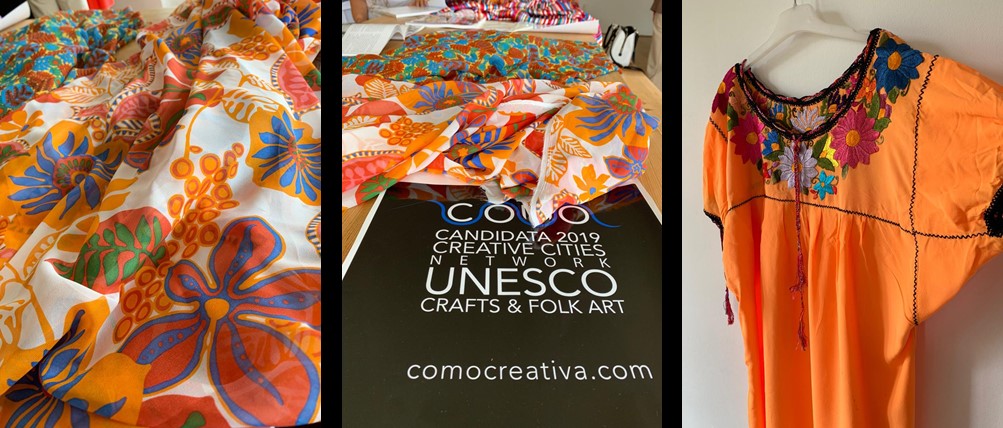
On August 3rd, 2019 a Creative Textile event was held in Archita, Mures, Romania. The event has been organized by the Maria Nobrega Foundation and the International Traditional Knowledge Institute, U.S. Chapter (ITKI US).
The event included the organization of a symposium at Von Sternberg House, introduced by Mrs. Elizabeth Nobrega de Araujo Tsakiroglou, president of the Maria Nobrega Foundation, who thanked the guests present and commemorated the late Colonel Michael Carrington, co-founder of the Maria Nobrega Foundation with Mrs. Elizabeth Nobrega de Araujo Tsakiroglou and of the International Traditional Knowledge Institute (ITKI), with Mr. Pietro Laureano, president of the ITKI in Florence (Italy).
The symposium continued with the presentation by Mr. Giuseppe Biagini, president and founder of the International Traditional Knowledge Institute, U.S. Chapter (ITKI US), who described the project Creative Textiles. The project wants to create opportunities, through physical and virtual encounters, to exchange traditional and creative knowledges between textile artisans from all over the world. The main goal is to enrich the local textile artisans with new cultural experiences, to promote creative contaminations between peoples, and to contrast the increasingly rampant phenomenon of “cultural appropriation”.
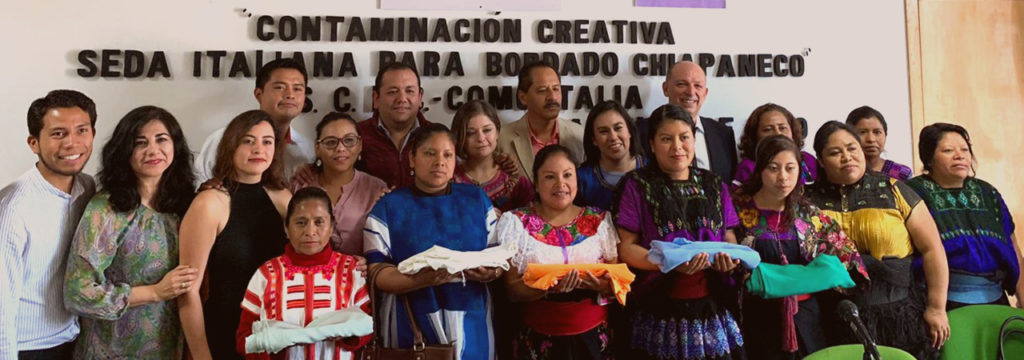
The first Creative Textiles event occurred in March 2019, in San Cristobal de Las Casas (Mexico), when Mr. Giuseppe Biagini hand delivered silk from the 2019 UNESCO Creative City Network Candidate Como (Italy) to artisans from Zinacantán, Chenalhó, Huixtán, Oxchuc, San Juan Cancuc to be used in preparing traditional local garments, and the City of Sam Cristobal de Las Casas challenged artisans from the City of Como to interpret local Mayan symbols and patterns (more details). The outcome of the event were officially presented in Fabriano (Italy), during the XIII UNESCO Creative City Network Annual Conference (June 12th 2019), with the display of the silk garments embroidered by artisans from San Cristobal de Las Casas together with the creative interpretations of the traditional Mayan symbols and motifs offered for the challenge by artisans from Como.

On August 3rd, a similar exhibition was enacted in Archita. This time the presence of the City of San Cristobal de Las Casas was a letter from the Focal Point of the City, Ms. Alethia Diaz Vazquez, dedicated to the occasion. Alethia Diaz Vasquez recalled in the letter that the collaboration between Como and San Cristobal de Las Casas is an exemplary application of the “Declaration of San Cristobal” and she highlighted that the Declaration has defined a method to exchange knowledge and traditions, in complete respect of local cultures. Particularly moving was her statement about the meaning that the delivery of the silk from Como had for the artisans of Zinacantán, Chenalhó, Huixtán, Oxchuc, San Juan Cancuc: they were able to work on a material little known to them (the silk), and to make contact with cultures and methods of processing textiles thousands of kilometers away from their homeland.
The Archita event was an opportunity to test the expansion of the Creative Textile project outside of the UNESCO Creative City Network and to propose the creation of a cultural hub, in which a new generation of Romanian artisans (Knowledge Keepers) can be trained and educated. Mrs. Elizabeth Nobrega de Araujo Tsakiroglou has made herself available to promote an annual event in Archita which will be open to textile artisans from all over the world. Giuseppe Biagini, speaking on behalf of ITKI-US, proposed an annual award for the best Knowledge Keeper who will participate to the Archita event, in memory of Colonel Michael Carrington.
The symposium then continued with presentations by Italian and Romania textiles experts.
First speaker was Mr. Stefano Vitali, president of the Italian Silk Association and deputy president of the International Silk Union, who underlined the cultural enrichment of the City of Como derived by the “creative contamination” with the City of San Cristobal de Las Casas. Followed Mr. Andrea Gatto, Director of a textile company in Bistrița (Romania), who pointed out that in 2002, when the company was built and he moved from Italy to Northern Romania, he was fascinated by the local “mix of creativity, entrepreneurship, passion and willingness to learn by the Romanian artisans…”[…]”…that today are recognized nationally and internationally as incredible textile professionals”.
Last presentation was delivered by Mr. Fulvio Alvisi, President of the Italian Textile Designers Association and ComoCrea, and international fair dedicated to present, three times a year, new collections for fashion and interior designers. Mr. Alvisi showed, through photos and videos, how the beauty of the territory of Como, the local culture and traditions, the creativity and the passion of Como’s artisans in textile processing, inspired the clothes and collections made by the most important contemporary fashion brands.
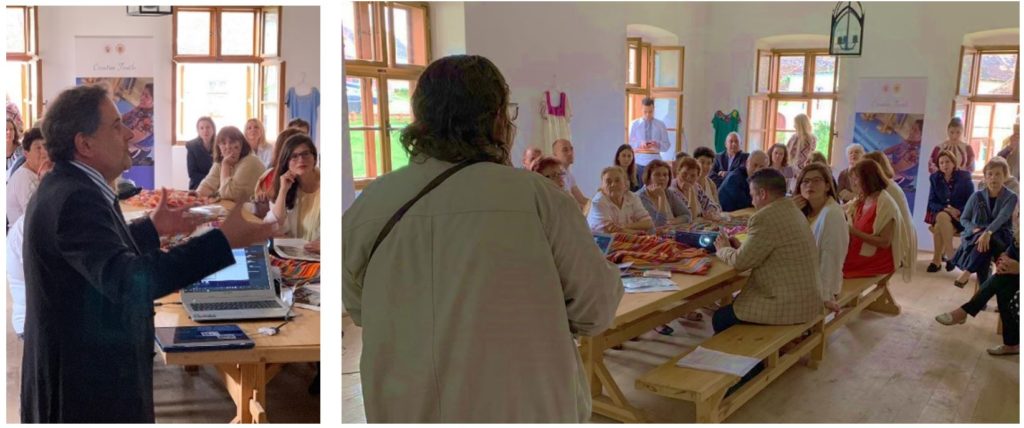
During the event three Romanian artisans demonstrated live the techniques for sewing and embroidering the traditional “IE” blouse, an ancient garment typical of the Romanian culture, which has become famous throughout the world. Prestigious international designers were inspired by the “IE” patterns to make garments from their collections, even if it was underlined how some of them didn’t recognize the cultural appropriation they enacted.
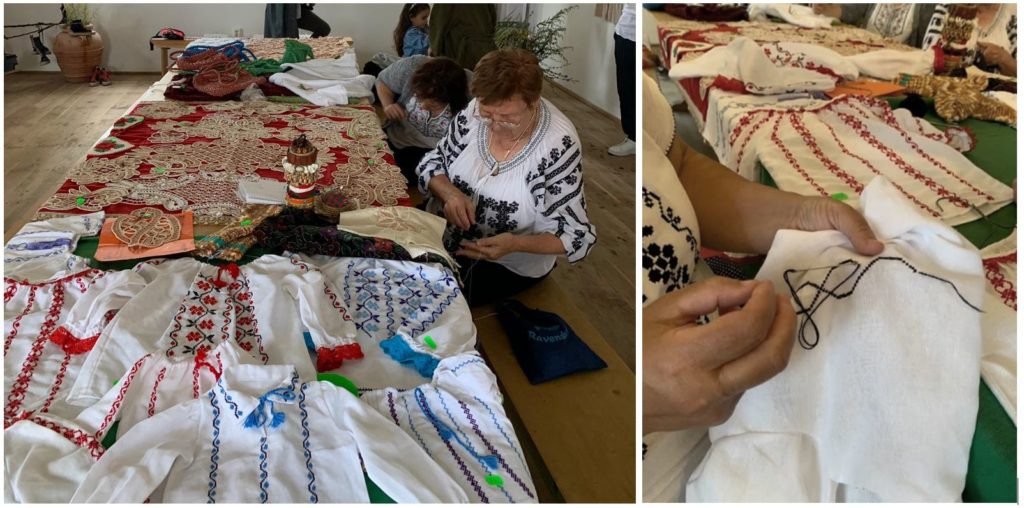
Present at the event was the young Moldavian designer Tatiana Bordeianu who, with her “Back Home” collection, is the winner of the 2019 Grand Prix Competition, organized by the Academia Show and the Eastern Art Department of the University of Iasi, Romania, with sponsorship by the Romanian Ministry of Youth and Sports and the patronage by the Maria Nobrega Foundation.
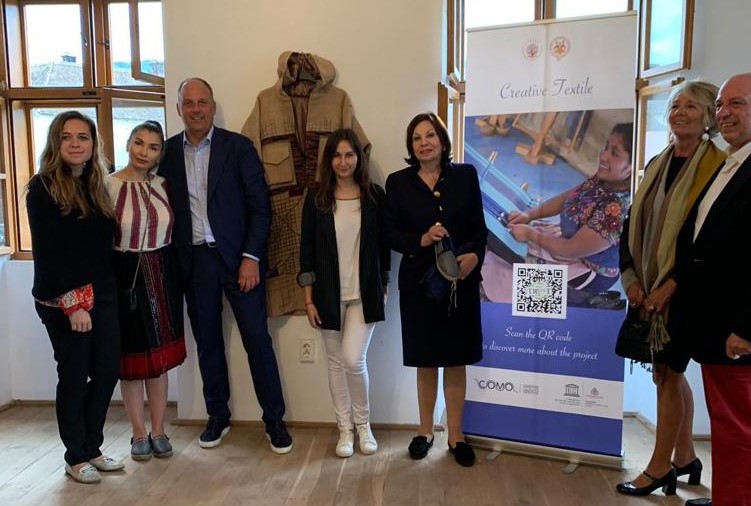
A further testimony of creative contamination at the Archita’s Event was the footwear collection of the designer Florentina Corina Pop, who showed how the traditional Spanish espadrilles, the Italian textile processing techniques and the symbols and typical Transylvanian patterns can produce real works of art, unique in their kind.
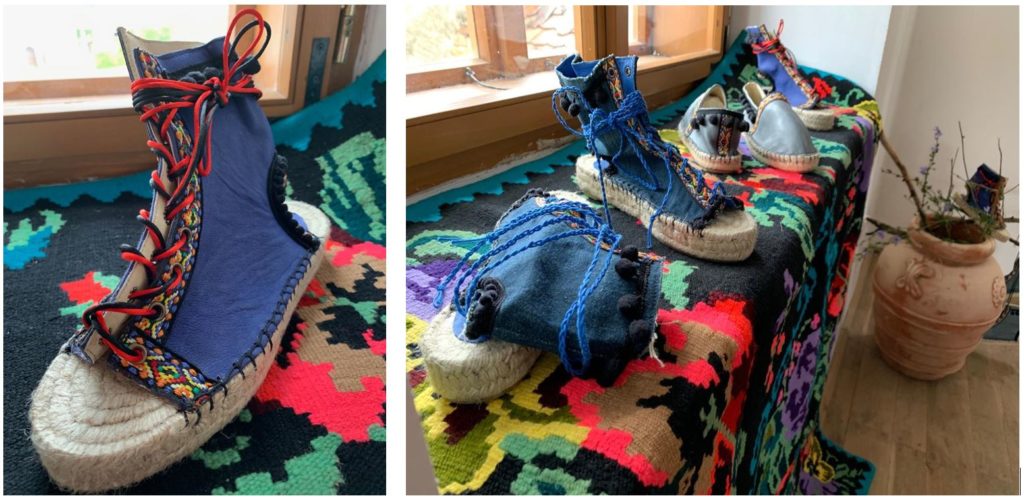
For further information please contact:
Maria Nobrega Foundation: contact@nobregafoundation.org
San Cristobal de Las Casas UCC: sancris.c.creativa.gob@gmail.com
ITKI-US: info@itkius.org

